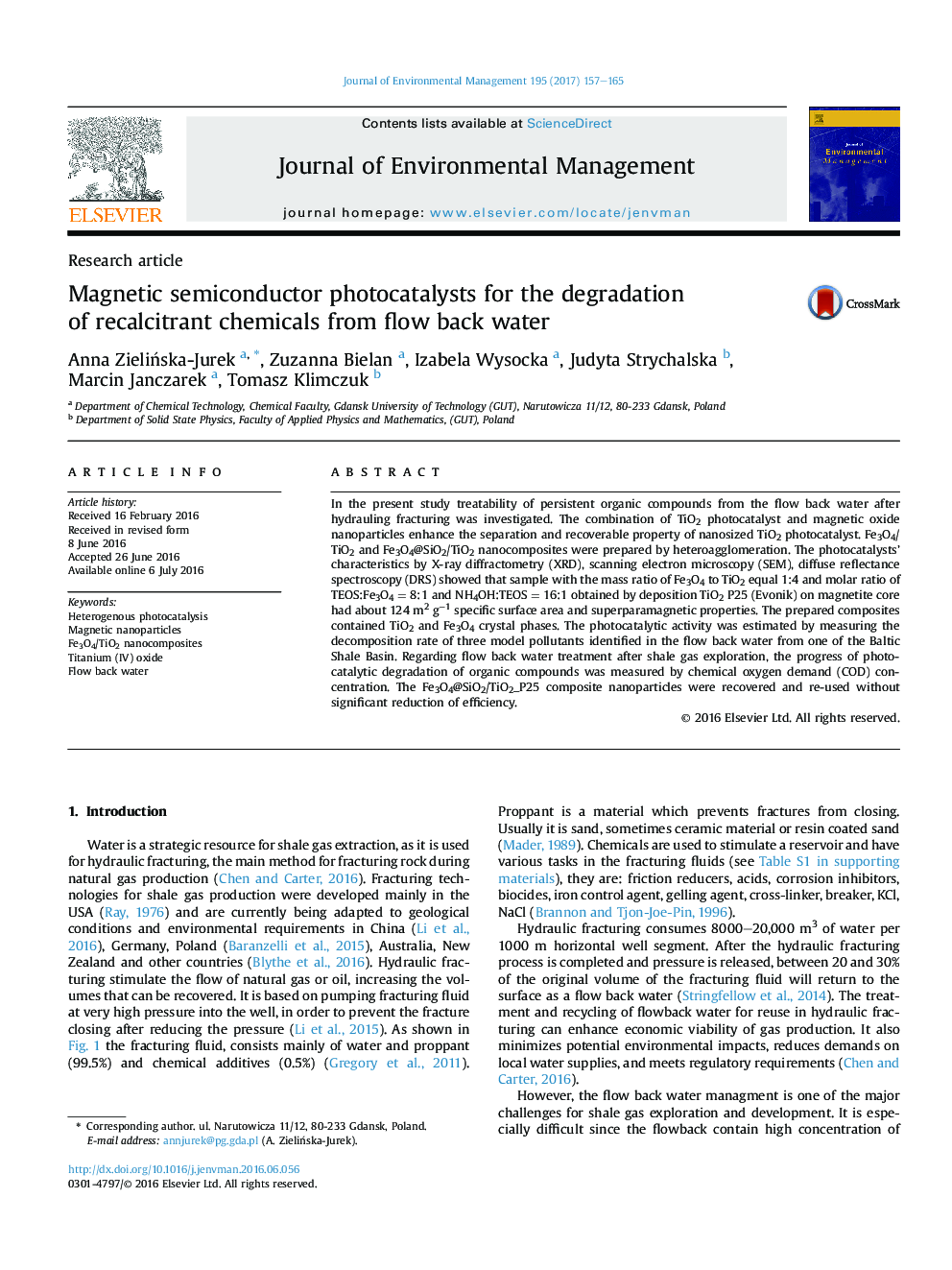| Article ID | Journal | Published Year | Pages | File Type |
|---|---|---|---|---|
| 5117007 | Journal of Environmental Management | 2017 | 9 Pages |
â¢Photocatalytic treatment of organic compounds present in flow back water was studied.â¢The effect of TiO2 type on structural, magnetic and photocatalytic properties was reported.â¢Most active sample was obtained by deposition of commercial titania P25 on Fe3O4/SiO2 nanocomposite surface.
In the present study treatability of persistent organic compounds from the flow back water after hydrauling fracturing was investigated. The combination of TiO2 photocatalyst and magnetic oxide nanoparticles enhance the separation and recoverable property of nanosized TiO2 photocatalyst. Fe3O4/TiO2 and Fe3O4@SiO2/TiO2 nanocomposites were prepared by heteroagglomeration. The photocatalysts' characteristics by X-ray diffractometry (XRD), scanning electron microscopy (SEM), diffuse reflectance spectroscopy (DRS) showed that sample with the mass ratio of Fe3O4 to TiO2 equal 1:4 and molar ratio of TEOS:Fe3O4Â =Â 8:1 and NH4OH:TEOSÂ =Â 16:1 obtained by deposition TiO2 P25 (Evonik) on magnetite core had about 124Â m2Â gâ1 specific surface area and superparamagnetic properties. The prepared composites contained TiO2 and Fe3O4 crystal phases. The photocatalytic activity was estimated by measuring the decomposition rate of three model pollutants identified in the flow back water from one of the Baltic Shale Basin. Regarding flow back water treatment after shale gas exploration, the progress of photocatalytic degradation of organic compounds was measured by chemical oxygen demand (COD) concentration. The Fe3O4@SiO2/TiO2_P25 composite nanoparticles were recovered and re-used without significant reduction of efficiency.
Graphical abstractDownload high-res image (227KB)Download full-size image
